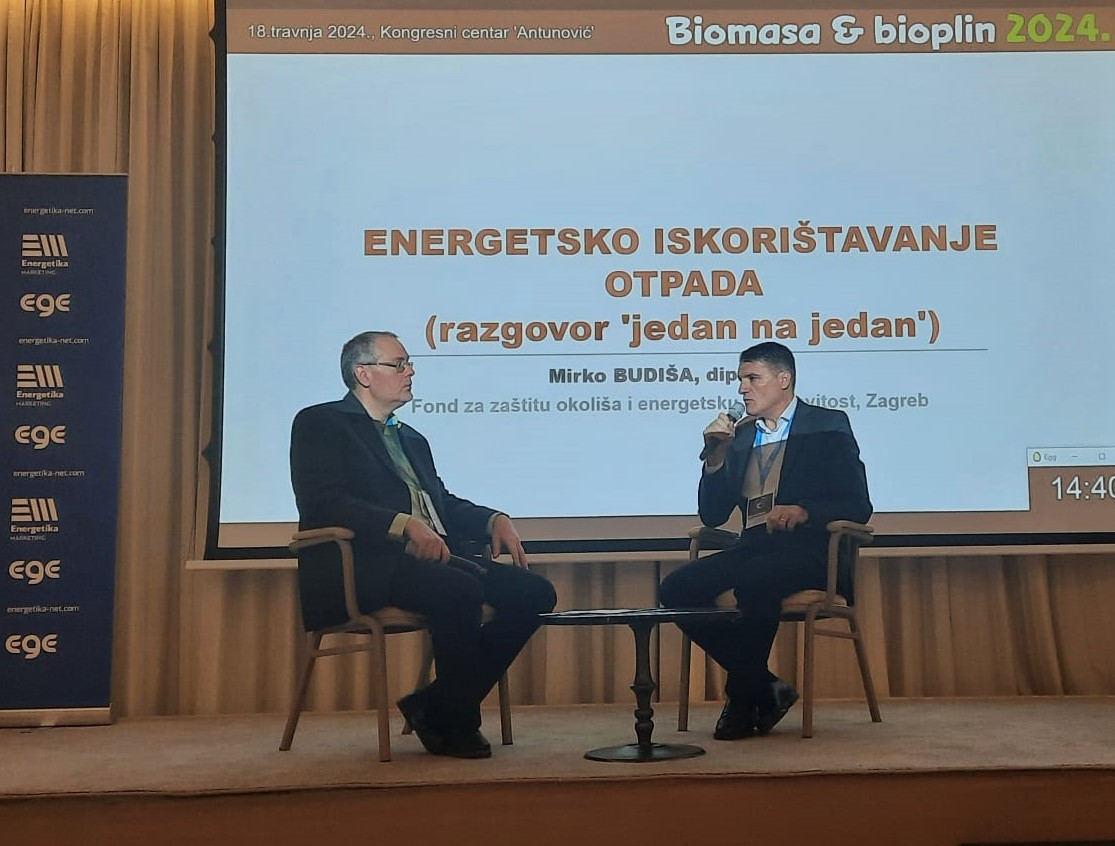18.04.2024.
By the end of this decade, the RePowerEU plan envisages production of 35 billion m3 of biomethane per year, while the total production of biogas in the 27 European member states in 2022 amounted to 16.8 billion m3 and of biomethane 4.2 billion m3. This is a clear indicator there is the need to significantly speed up and increase production from such plants. How to achieve this, where are Croatian biogas plants in all this, and business challenges are faced by this sector was discussed at the 2024 Biomass & Biogas Seminar, which was held yesterday in Zagreb, organised by Energetika marketing.Among other things, the production of such energy is also possible from waste, so Mirko Budiša, deputy director of the Environmental Protection and Energy Efficiency Fund, talked about waste power plants. Budiša pointed out that all EU member states, except Croatia, have waste-to-energy plants. "Out of a total of 11 waste management centres that Croatia should have, of which four are in operation and six in different phases of construction and design, not one of them are planned a waste-to-energy plants. However, this may change. A good example is WMC Bikarac in Šibenik-Knin County where the first such power plant will be built and the centre will produce RDF," announced Budiša. The Fund granted Šibenik 3 million euros for co-financing the study and project documentation, and the goal is to distribute thus generated power to consumers in the Podi Business Zone.
Danijela Jemrić from the Sector for Industry and Sustainable Development at the Croatian Chamber of Economy also stressed the role of biomass and biogas not only in the stabilisation of the power grid, but also in agriculture and waste management. Karolina Novak Mavar, associate professor at the Faculty of Mining, Geology and Petroleum Engineering of the University of Zagreb, believes that the use of biomethane can play a significant role in the transition towards a low-carbon society, and she mentioned that the largest producers of biogas and biomethane were Germany, Italy and France.
Mihaela Grubišić Šeba, senior advisor at the Energy Institute Hrvoje Požar (EIHP), reminded that Croatian biogas plants were mostly built thanks to incentives and emphasized that animal husbandry should be more relied on in biogas production as there were 1.4 million head of livestock (pigs and cattle) in Croatia, mostly in Vukovar-Srijem and Osijek-Baranja Counties. According to data from 2022, Croatia had 42 biogas plants and not a single biomethane plant, while the share of biogas in the supply of natural gas reached 4.1 percent in 2021.
As part of the seminar, a round table was held on different topics such as the issues of operation of biogas and biomass plants in the light of new RES incentive schemes and changes in the legislation, design, construction, operation and maintenance of plants, and proposals for improving and optimising the current situation.






